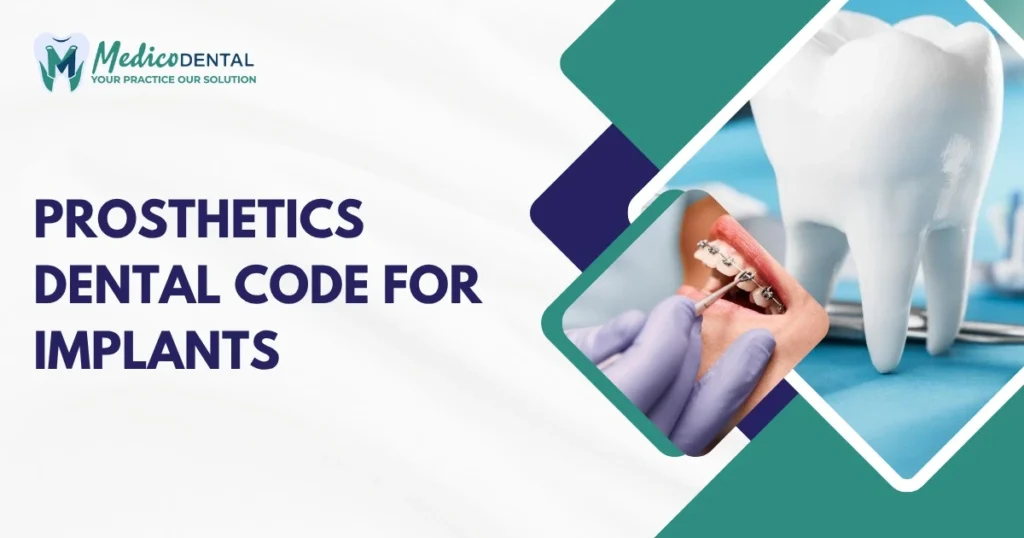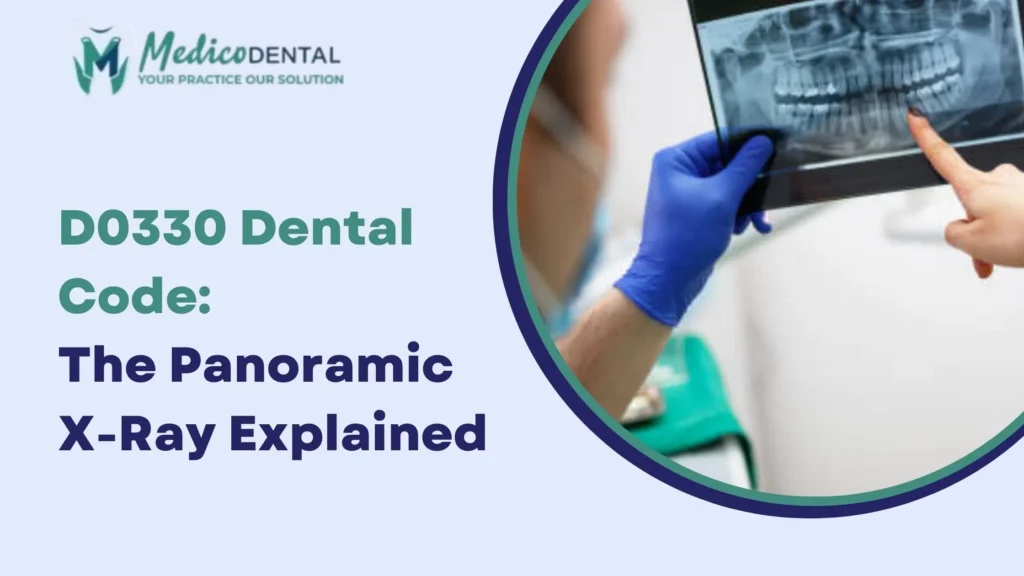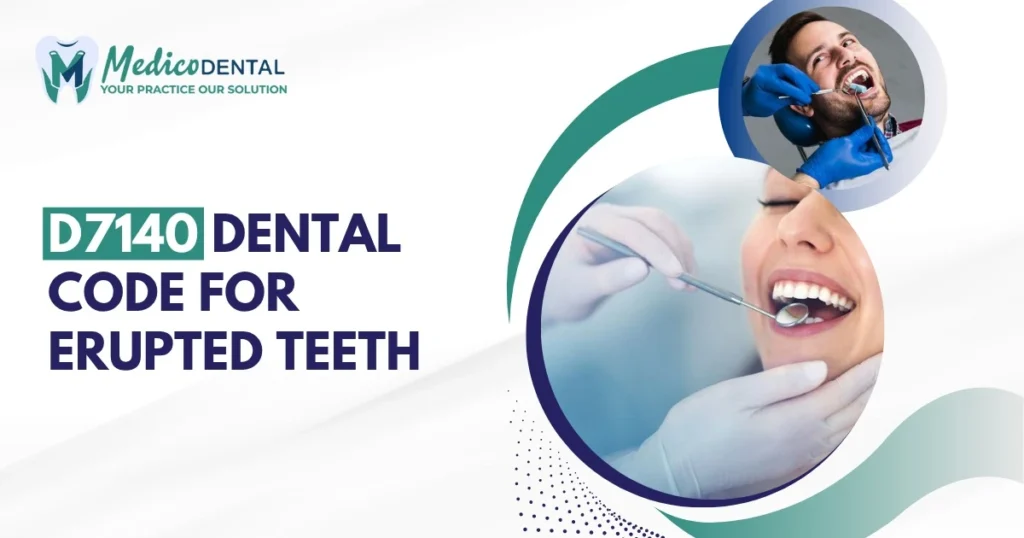Prosthetics Dental Code for Implants
Dental implants are a key solution for replacing missing teeth, improving both function and aesthetics. Proper coding for these dental procedures is essential for accurate billing, insurance claims, and tracking patient care. Prosthetics dental codes are used to categorize different types of dental prostheses, including those supported by dental implants. By understanding these codes, dental professionals can ensure correct billing and documentation while providing top notch care to their patients.
Overview of Prosthetic Dentistry
Prosthetic dentistry involves the design, creation, and fitting of artificial devices like dentures, bridges, and implants to restore the form and function of missing or damaged teeth. These prosthetics can be supported by natural teeth, gums, or, in the case of dental implants, artificial roots embedded into the jawbone. Implants are highly beneficial as they offer durability, stability, and a more natural appearance compared to traditional dentures or bridges. Prosthetic dentistry is crucial for improving the quality of life for patients suffering from tooth loss.
Importance of Correct Coding in Dental Implants
Correct coding in prosthetics dentistry, especially for implants, ensures accurate documentation and billing for treatments. It helps avoid discrepancies, insurance claim issues, and underpayment or overpayment for services. As dental implants have become increasingly popular, having the right prosthetic codes is critical for both the dentist and the patient. Accurate coding also improves workflow, aids in patient tracking, and ensures that each part of the procedure is covered properly.
Common Prosthetic Dental Codes for Implants
Dental prosthetics for implants are categorized into several codes, each representing specific types of dentures, crowns, or other implant supported prostheses. Below are some of the most commonly used codes:
Complete Dentures and Implants
D5110: Complete Maxillary Denture
This code represents a complete upper denture, which is used to replace all missing teeth in the upper jaw. This is often combined with implants to improve the denture’s stability and functionality.
D5120: Complete Mandibular Denture
Similar to D5110, this code is for a complete lower denture used to replace all missing teeth in the lower jaw. Implant support can be used to prevent the denture from slipping or shifting.
Partial Dentures and Implants
D5211: Maxillary Partial Denture (Resin Base)
This code is used for a partial denture for the upper jaw, made from a resin base. These dentures are used when only some teeth are missing, and implants may be used to further enhance the fit and stability.
D5212: Mandibular Partial Denture (Resin Base)
This code is for a partial denture for the lower jaw. It is similar to D5211 but designed to fit the lower jaw and can also be supported by dental implants for better functionality.
Implant Supported Prosthetics
D6065: Implant Supported Porcelain/Ceramic Crown
This code is used for a porcelain or ceramic crown that is supported by a dental implant. These crowns are aesthetically pleasing and durable, making them an ideal choice for patients seeking a natural look.
D6066: Implant Supported Porcelain Fused to Metal Crown
A combination of porcelain and metal provides added strength. This code covers crowns that are supported by implants, often used for molars or other teeth that require extra durability.
D6067: Implant Supported Metal Crown
This code is for metal crowns supported by dental implants. Metal crowns are highly durable and are often used for back teeth, where the pressure of chewing is the greatest.
D6110: Implant Supported Removable Denture
This code covers removable dentures that are supported by implants. This type of denture is ideal for patients who need full tooth replacement but want the option to remove it for cleaning or comfort.
D6115: Implant Abutment Supported Fixed Denture
This code is used for fixed dentures that are supported by both implants and abutments. These provide a stable, permanent solution for patients who prefer not to remove their dentures.
Maxillofacial Prosthetic Codes for Implants
D21076: Surgical Obturator Prosthesis
This is a specialized Maxillofacial prosthesis used for patients who need a surgical obturator, often following surgery to remove part of the palate or other oral tissues. It can be supported by implants for additional stability.
D21088: Facial Prosthesis
This code refers to a facial prosthesis used to restore the appearance of the face, often following significant trauma or surgery. Implant support provides better retention and comfort for the patient.
Key Considerations When Using Prosthetics Dental Codes for Implants
Properly using prosthetics dental codes for implants requires careful attention to several factors. These considerations are vital for ensuring that dental procedures are correctly documented, processed for insurance claims, and ultimately, that patients receive the best care possible. In this section, we’ll explore some key elements to keep in mind when dealing with dental implant prosthetics codes.
Verifying Insurance Coverage
Before proceeding with implant treatments, verifying insurance coverage is one of the most important steps. Many insurance companies have specific policies regarding what types of dental implants and prosthetics are covered, as well as the associated costs. By verifying coverage beforehand, dental practices can avoid complications or unexpected costs for patients. It’s essential to confirm whether the patient’s insurance will cover the prosthetic components, such as crowns, dentures, or implants, and if any pre authorization is required. This can save both the patient and the dental office time and ensure a smoother process.
Documentation and Pre Authorization
Clear and accurate documentation is crucial for the successful reimbursement of implant based procedures. Most insurance providers require detailed documentation, including pre authorization for implant procedures. This documentation must outline the medical necessity of the implants and the expected benefits. Pre authorization can prevent delays in treatment and help ensure the procedure is covered under the patient’s policy. Dentists must submit all required forms and supporting documents before beginning treatment to avoid potential issues with payment and insurance claims.
Selecting the Most Specific Code
Dental implants and prosthetic treatments come with a variety of codes, each meant to describe different types of procedures and materials. When selecting the correct code, it’s essential to choose the most specific one that accurately reflects the service provided. Using the correct, most specific code ensures that both the patient and the dental office are reimbursed appropriately. For example, using an implant supported porcelain crown code instead of a general dental crown code will ensure the implant specific nature of the procedure is properly accounted for. This also reduces the risk of claims being denied or delayed due to incorrect or overly broad coding.
The Role of Implant Dentistry in Prosthetic Care
Implant dentistry plays a significant role in modern prosthetic care, offering patients a more durable, functional, and aesthetically pleasing solution to missing teeth. Unlike traditional dentures or bridges, dental implants are anchored directly into the jawbone, mimicking the natural tooth’s function and appearance. This provides better support and stability for prosthetics, enhancing comfort and chewing efficiency for the patient. Implants have revolutionized the way prosthetic dentistry is approached, enabling long term, reliable solutions for patients who require tooth replacement.
Benefits of Implant Supported Prosthetics
Implant supported prosthetics offer a number of advantages over traditional prosthetic options:
Improved Functionality
Dental implants are securely anchored to the jaw, providing excellent chewing function and reducing the risk of discomfort or movement during eating.
Enhanced Aesthetics
Implants look and feel like natural teeth, making them a popular choice for patients seeking a more aesthetic solution for missing teeth.
Increased Durability
Implants have a long lifespan and can withstand regular wear and tear, often lasting decades with proper care. This makes them a cost effective option over time.
Better Oral Health
Implants prevent bone loss by stimulating the jawbone, which helps maintain facial structure and prevents the sinking appearance often seen with traditional dentures.
Stability and Comfort
Unlike removable dentures, implant supported prosthetics are fixed in place, offering more stability and comfort for patients.
Advancements in Dental Implant Technologies
Dental implant technologies have advanced significantly over the past few decades. Some of the key advancements include:
3D Imaging and Planning
Advanced imaging technologies, such as CBCT (Cone Beam Computed Tomography), allow dentists to map out precise implant placements before surgery, improving the outcome and minimizing risks.
Mini Implants
For patients with limited jawbone density, mini implants provide a less invasive option with quicker recovery times and fewer complications.
Immediate Load Implants
These implants allow for the placement of a crown or bridge immediately after the implant is placed, reducing the time needed for the entire treatment process.
Laser Technology
Laser technology is being used to enhance precision and reduce recovery times during implant placement, improving the overall patient experience.
Conclusion
Accurate coding in prosthetic dentistry, particularly for implants, is essential for ensuring successful claims, effective patient care, and proper documentation. By carefully considering insurance coverage, documentation requirements, and the selection of the most specific codes, dental professionals can avoid common issues and streamline the implant treatment process. Implant supported prosthetics continue to revolutionize dental care by offering long lasting, functional, and aesthetically pleasing solutions for patients. Staying updated on advancements in implant technology and accurate coding will ensure that dental practices provide the best care possible to their patients.
Accurate coding is paramount to ensuring the success of insurance claims and reimbursement for implant procedures. When the correct codes are used, it helps avoid payment delays or denials and ensures that the dental office is reimbursed for the full scope of work performed. Moreover, accurate coding ensures that patients are not charged incorrectly, which can lead to better patient satisfaction and trust. Proper coding also helps dental offices maintain a streamlined workflow, reducing administrative burdens and improving overall practice efficiency.
FAQs
What is the difference between D6065 and D6066 codes?
Ans. D6065 refers to an implant supported porcelain/ceramic crown, while D6066 is an implant supported porcelain fused to metal crown. The main difference is the materials used for the crown.
Do I need pre authorization for implant supported prosthetics?
Ans. Yes, many insurance providers require pre authorization for implant procedures to ensure the treatment is covered under the patient’s policy.
Are mini implants covered by insurance?
Ans. Coverage for mini implants varies by insurance provider. It’s important to check with the insurance company to determine if mini implants are covered.
How do I ensure the correct code is used?
Ans. Always select the most specific code that matches the procedure performed. When in doubt, consult the American Dental Association (ADA) code guidelines or your insurance provider.
How long do dental implants last?
Ans. With proper care, dental implants can last 20 years or more. They are designed to be a long term solution for missing teeth.



